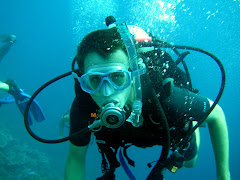It’s cool to see how sometimes an outsider (me) can just bring up an idea and see results without having to do much, showing the latent demand for doing projects here. In this case, the idea for planting mangroves was still popular, even though the original plan didn’t work. (It should be noted that many ideas aren’t received this well, and are often quickly met with a reason that something can’t be done.) And while I was gone in Manila for a training, the Sangguniang Kabataan (every barangay has like a neighborhood council for youths, the SK) and a couple other community groups conducted a small mangrove planting at the mouth of the river. When I returned to check it out, I could see only a few propagules still surviving – an unexpected typhoon rolled through the Visayas, and the planters didn’t have the proper tools to plant them deep enough in the first place. But it was a start.
On Earth Day, another coastal cleanup was conducted. It was incredible and disheartening to see how much garbage had accumulated in the area since the cleanup about a month prior by the high school students. Some of it came from the ocean or river during high tide, and some of it was obvious dumping activity. Coastal cleanups often feel like a ridiculous Sisyphean task to me, without anything else to go along with it that will actually change the behavior that leads to so much litter. Anyway, the beach was left somewhat clean (at least below the high tide line) and ready for the next round of planting.
As an Earth Day activity, but occurring on April 26, our local Petron company had a CSR-type event working with my office and the Bantay Dagat to plant mangroves at the river. This time, the seedlings were bigger, the tools were better, and the people were out in full force. We even had a banner and t-shirts! I was amazed at the efficiency of the planting. About 200 propagules and seedlings were probably planted in an hour. I returned to the site a couple days later and found about 75% still alive. Some had broken off directly at the sand line. I suspected wave action, by my co-workers were more worried about naughty children. I guess we’ll see how it goes – mangroves are up against enough without having to deal with little miscreants. Regardless, the area will require a lot of care, replanting, and observation until it becomes more established.
Enjoy some pictures from the event:
The mangroves arrive via Bantay Dagat patrol boat
Mangrove propagules ready for planting
No event is complete without a hand-painted banner..
The planting begins:
FOR MORE INFORMATION ABOUT MANGROVES:
An excellent primer by the Shedd Aquarium
The Mangrove Action Project
Wikipedia Article

